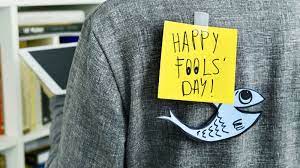
April Fool’s Day has been celebrated for several hundred centuries by several different cultures and religions in one way or another. The root of the day, however, celebrated by several different cultures, has always remained the same. A day has always been a tradition of pranks and hoaxes, and practical jokes followed by shouting “April Fools!”
While the exact origin of April Fool’s Day remains unknown, historians believe that it dates back to 1563. However, the term “April Fool”, -for a person that has been deceived by a prank- can be traced back to the early 1600s.
April Fool’s day is celebrated all around the world in different ways, but its roots remain the same. In France, the fooled victim is called poisson d’avril, which translates to “April Fish”. The common prank in France is pinning a paper fish to a friend’s shirt.
In Scotland, April Fool’s Day, which is known as Gwok Day– a Gwok is another name for Cookoo, which is a common symbol of a fool. Scottish Pranking lasts 2 days, with the second day being known as Tailie Day. On Tailie Day, participants pin a paper tail, or a “kick me” sign to their victim’s backs.
Brazilian’s celebrate April Fool’s day as “Lie Day”, where friends often try to lie to their loved ones and fool them into ridiculous lies. Brazilian news stations will often put out crazy and unbelievable stories to fool the public. It is believed that telling a lie to a friend on this day will grant you good luck and rain for your crops for the rest of the year.
While the exact beginning of April Fools day still might remain a mystery, it’s no secret that April Fools day of one of the most enjoyed holidays all around the world. With seemingly limitless ways to celebrate, April Fool’s day will always remain one of the world’s most enjoyed holidays.
